Windows Phone 8.1 Review
by Anand Lal Shimpi on April 14, 2014 10:00 PM EST- Posted in
- Smartphones
- Microsoft
- Mobile
- windows phone
- Windows Phone 8.1
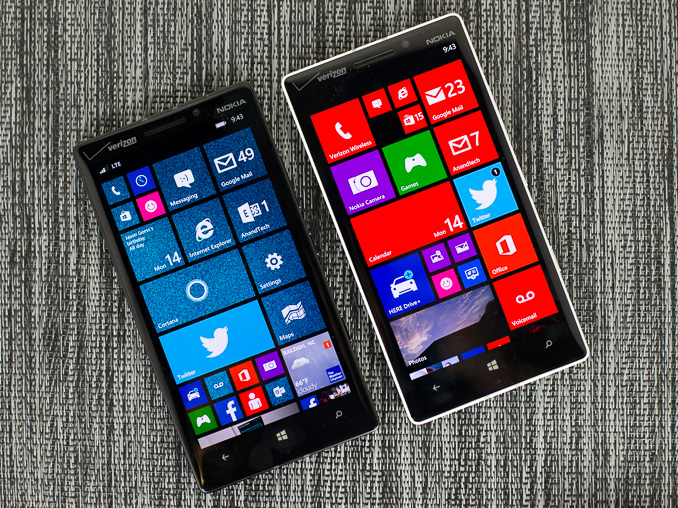
I was an early fan of Windows Phone 7. I remember completely switching over to the platform for about a month back in 2010, and being relatively happy. It wasn’t until I needed tethering support (which didn’t exist in the first release of WP7) that I had to move away. Unfortunately, Microsoft’s software and hardware update cadence for Windows Phone couldn’t pull me back.
In its first three years of existence, Windows Phone received roughly the same number of major updates as Android and iOS. From 2010 - 2013, Google took Android from Gingerbread to KitKat, Apple revved iOS from version 4 to 7, and Microsoft gave us Windows Phone 7, 7.5 and 8.0. At best, you can consider the software release cadence competitive. At worst, it’s not enough. Windows Phone started behind both Android and iOS. To come out ahead, Windows Phone updates had to be more substantive, more frequent or both.
The same could be said about hardware. Microsoft lagged behind Apple and Google to dual-core, 28/32nm silicon, higher resolution displays, and LTE support among other things. Although the situation has improved over the past year, if the goal is to take the #1 or #2 spot, the upgrade cadence needs to be more aggressive.
It always felt like the point of Windows Phone was to be a midpoint between the flexibility of Android and iOS’ guarantee of a certain level of user experience. The platform was born during a time when Android was not yet ready for the mainstream (Gingerbread) as an iOS alternative, and when it still looked like the Windows licensing model would work for handset OEMs.
Today the world is a different place. Android is far more mature than it was in 2010, and it’s polished enough where it can easily be a solution for the enthusiast as well as the first time smartphone user. While Microsoft’s strategy in 2010 might have been one of eyeing the crown, in 2014 the strategy is more humble and focused.
Improve the platform, address issues both little and big, and continue to grow. That’s the mantra these days and today we see it put in action with the arrival of Windows Phone 8.1, the fourth major release of the platform since its arrival in 2010.
I’ve spent the past few days using a Nokia Lumia Icon with the Windows Phone 8.1 developer preview (software available today). All devices capable of running Windows Phone 8 will be getting the 8.1 update for free over the next couple of months. Any new hardware vendors looking to ship Windows Phone 8.1 will be able to do so without paying Microsoft any licensing fees for the software itself.
Although the biggest change to Windows Phone 8.1 happens to be at the API level (including support for universal apps that can run on PCs, tablets and phones), there are a number of user facing feature enhancements that are worth talking about. Microsoft’s reviewer’s guide for Windows Phone 8.1 clocks in at 239 pages, so there’s no way I’ll be able to get to everything here, but I’ll go through several of the highlights.
Start Screen Updates
With the GDR3 update to Windows Phone 8, Microsoft added support for a third column of medium sized tiles on 1080p devices with a large display. With Windows Phone 8.1, that flexibility comes to all devices.
The third column is pretty nice, although admittedly the Lumia Icon I was testing WP8.1 on already had it thanks to the WP8.0 GDR3 update. You can use the third column to either have an insane amount of tiles on the display at once or keep everything nice and spread out. Windows Phone ends up covering the broadest spectrum of information density on its home screen as a result.
The other big change to the start screen is you can now set a photo as a background, instead of being limited to just white/black. With a photo as your background, your live tiles become transparent and allow your background to show through. Tiles that have a colored logo (e.g. Xbox Games, Facebook app) as well as any hub tiles (e.g. People) remain opaque. Despite going through three major revisions of the OS, Windows Phone hasn’t really changed much visually since its introduction in 2010. The ability to personalize the start screen goes a long way in making the UI more interesting.
The multitasking UI gets a slight update as well in WP8.1. You still tap and hold the back button to activate the UI, but you can now quit out of apps by swiping down on the app’s card.
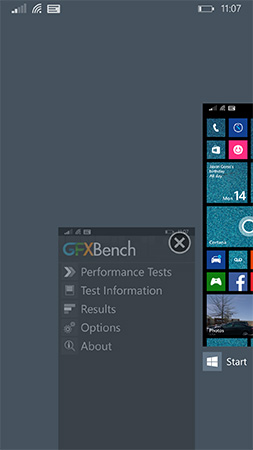
This is quite similar to what’s supported under iOS 7 (where it’s swipe up to quit). Unlike the iOS implementation however you can only swipe down one app at a time.
Revised System Specs
At the introduction of Windows Phone, Microsoft required that all OEMs have a physical camera button in addition to physical or capacitive buttons for back, home and search. It didn’t take long for Microsoft to remove the physical camera button requirement. With Windows Phone 8.1 the back/home/search buttons can be relocated on-screen, similar to what’s done on many Android handsets today. To accommodate those devices that inevitably ship without dedicated OS buttons, the screenshot button combination has changed from Power + Windows button to Power + Volume up.
The adjusted hardware requirements should make it easier for OEMs to take an existing Android hardware design and port it over to Windows Phone.
People Hub API, Disconnected Music+Videos Hub
When Windows Phone launched one of the major focal points was the People Hub, a single location for all of your contacts across all accounts/social networks. Previously you had to add accounts to Windows Phone in order for the People Hub to grab contacts from those accounts. With Windows Phone 8.1 Microsoft moves the People Hub from a push to a pull based service. If a 3rd party app supports it, all you need to do is login to the app itself and the People Hub will automatically pull in data from the app. Facebook is the best example of this as you no longer need to login to the Facebook app and then add your Facebook account separately to the People Hub. It’s a subtle change but one that echoes Microsoft’s new position on Windows Phone: rather than you conforming to Windows Phone, the OS should try and conform to you.
The other big hub change is the Music+Videos hub has been split up into two individual apps, each which can be updated independently of the OS.


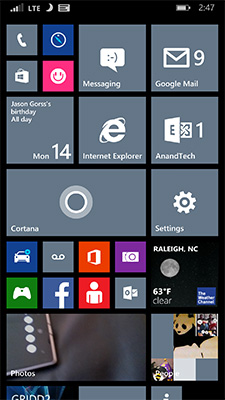
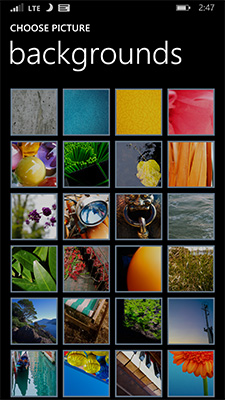

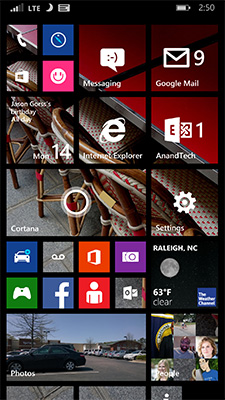
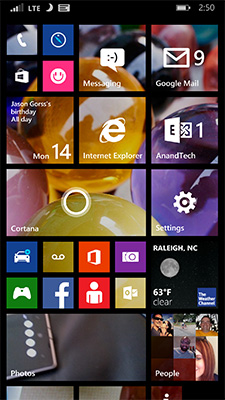
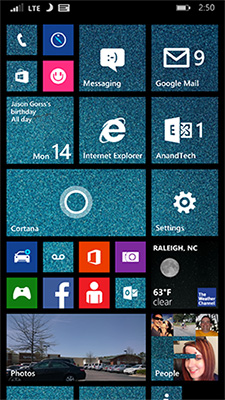
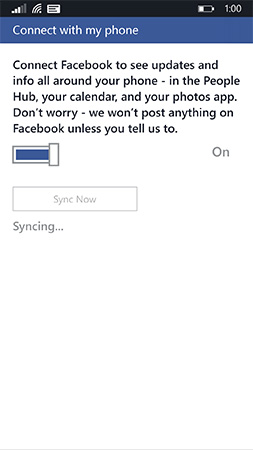








111 Comments
View All Comments
Max(IT) - Saturday, April 19, 2014 - link
Lumia 800 is NOT windows phone 8 device dude ....Myrandex - Sunday, April 20, 2014 - link
Yea...comparing a WP7 device to the GS3...what would you expect. Although I used a Lumia 900 for a bit which was really similar to the 800 you mentioned and it was rather fast and stable. My son likes it now too.LemmingOverlord - Wednesday, April 16, 2014 - link
Let's make something very clear in the whole Windows Phone v. Android v. iOS debate - no-one in their right mind will say a good thing about Windows Phone 7.x or anything that predates 8.0. The problem for Microsoft is that it earned itself so many black marks trying to get it right, that they lost credibility. I have used iOS, Android (still do, in fact) and I am probably one of the biggest fans of Windows Phone 8, ever.Why?
Because I was a true skeptic and when I finally got my hands on it, it did not fail me where iOS and Android failed. You actually feel you are getting your money's worth from these devices (in particular Nokia Lumia).
Here are a few of the highlights together with the most common misconceptions about WP 8+ and my view on them:
Low hardware specs?
Here I disagree with Anand. Sure, trailing its rivals Apple and the Google ecosystem isn't doing Microsoft/Nokia marketing any favours, but anyone who's used WP 8 sees (and feels) that it runs smooth and doesn't choke on its own swill (no matter if it's a lowly Ascend W1 or a Lumia Icon/925), not even after months of installing / removing Apps, like Android does. I have to regularly factory-reset my Transformer TF300T pad to get it to work properly. My various junk android phones? The same. iPhone not so much, but then again, I hardly install stuff on it, nowadays.
Choking on RAM.
Android, in particular, seems to choke a lot on limited RAM and swapping data around. I don't fault Android completely for it, but probably the handset and tablet makers simply went full-retard when releasing hundreds of different SKUs with limited margins. Choices were made. BOMs were cut to the bone, etc etc. WP 8 does a brilliant job at multitasking and switching active apps. You don't feel it's loading up an app, you just smoothly slide into one.
The "limited" App store?
Well, I don't care about 5 million Apps, I care about the handful that really are worth having - and so far I have them all on WP 8. I'd say WP users have the luck of getting the apps worth having, after they've matured on Android or iOS. Laugh all you want, but push comes to shove, I've had no "software maturity" issues on WP 8 (well, all but one!). On the other hand, again, this won't do MS/Nokia any favours, but to be brutally honest, I'm glad I don't have to wade through a cesspool of crappy "official-but-not-really" apps. The exception I make is to an inexistant native Youtube player. For reasons no-one really understands Google and Microsoft have been banging heads over this, and (considering I haven't updated to 8.1 yet) I'm not sure this is sorted in the new update (as the Youtube player is listed under the "browser" features!). Yes, crappy youtube is a definite downside. But that's not even the sticking point for 99,9% of naysayers.
The "blocky" design.
Well, it's the smoothest scrolling, quickest and baddest interface I've used to date. Yeah, the tiles look weird at first, but you have to use it to believe it. It's smooth flowing, fast and just a joy to use. You might not like tiles, but they just work better for me. Try it out, suspend disbelief for a couple of minutes.
Native Office support
Yes. This is a cliché, but I have no issues reading, rendering or editing documents from desktop versions in the WP 8 Office. It's brilliant, and only someone who is held to a very low standard or completely disregards the basic need for a word processor, a spreadsheet or a powerpoint, will snub this. My experience on iOS and Android (pre-Office for iPad, mind you) is, in one word, atrocious.
There are a few other things you get for "free" with Windows Phone 8, in particular the Nokias. The camera software is fool-proof not to mention the quality on Nokia handsets is sooooo more "reliable" than the competitors. Yes, you have tons of "filter" apps for iOS, and the hipsters love it. :)
It boils down to this: WP 8 is all about suspension of disbelief. Microsoft did come through with something that is actually very polished. 8.1 seems to build on that without compromising "old" hardware. You can upgrade a low-specced Lumia 520 as well as your Nokia Icon. This kind of full-range compatibility is mind-blowing, these days. Android, the "open-source" mobile OS is on so many types of hardware that it's really hard to get KitKat on any device (and to be honest, when I moved to jelly bean, my 1GB of RAM on the TF300T seemed woefully inadequate for the OS... ie: at boot, a factory-reset Jelly Bean is eating up 33% more RAM than Ice Cream Sandwich.
dorekk - Saturday, June 21, 2014 - link
Actually, I like 7.5. I'm still on 7.5 because I haven't bought a new phone yet, and I would DAMN sure rather be using this phone than any other phone this old.MarkWebb - Wednesday, April 23, 2014 - link
I agree with your comments. Amazing how well the 520 works and how many times it is getting major updates. For a budget phone it can't be beat. What I can't understand, however, is why the new 630 will ship with the present low-rez screen. Well at least I might be able to dial a phone number on it without reading glasses. (2014 with resizeable screens, and designers still favor small fonts, small design elements.)usama_ah - Tuesday, April 15, 2014 - link
Try out the update? I've recommended to a few who love WP8 though I myself use Android. The simplicity of WP8 is what they enjoy. Still if you download the developer preview maybe you'll be satisfied with some of the updates?Jumangi - Tuesday, April 15, 2014 - link
Looks like the troll wasn't fed today...SoCalBoomer - Tuesday, April 15, 2014 - link
That's a shame, D1RTY - nearly all of the WP users I know (and, admittedly, there aren't too many of us) really enjoy our phones. My wife was really dubious but now she has her games and really enjoys her phone. To each his/her own. . .miahshodan - Wednesday, April 16, 2014 - link
I just switched from a Lumia 920 to a Moto X. It was worth it to save the $ on republic wireless vs. ATT, but otherwise I really miss my windows phone. It was smoother, had a better camera, and worked with Microsoft services (what I mostly use) better.Max(IT) - Saturday, April 19, 2014 - link
I could say quite the contrary: long time android and iOS user, I'm very happy about my Lumia wp experience